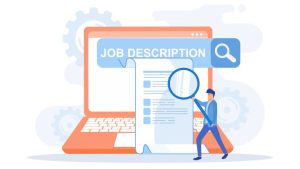How to Start an Employee Mentoring Program
 Publié le 21 March 2022
Publié le 21 March 2022
With the positive benefits strong mentors have on employees and the workplace, all organizations should be considering how to start an employee mentoring program.
There are many reasons your company needs to have a comprehensive employee mentoring strategy. First — and obviously — it will set employees on a path to professional fulfillment and make them more skilled, capable, and confident in their roles. But second, and arguably just as important, good mentoring helps to sustain or improve the employees’ mental well-being, which is a significantly growing concern in business and high on many HR leaders’ agendas.
An employee mentoring strategy should outline the steps and the necessary tactics you need to implement in order to empower your employees to achieve more in their professional life.
Whether you have hired talented individuals on a budget or if you paid top-dollar to bring experts into your company, there’s no denying that you need to keep investing in their professional growth. After all, the more you invest in your company, the more they’ll invest in growing your business.
Are you wondering how to start an employee mentoring program? What are some of the employee mentoring best practices you should implement? Is there an employee mentoring approach you should focus on the most? Let’s explore all of these questions and see how the answers can lead to an improved workplace..
Identify the key roles and growth opportunities
Every industry and business is different, and there isn’t a single employee mentoring guide that all business leaders should follow. There are some employee mentoring best practices and key tactics you should follow when considering how to start an employee mentoring program, but a lot of it will require some trial and error on your part. This will be the key to finding the right mentor but also to identify what works best for your brand and your unique work environment.
That said, the very first step is always to identify the key roles and growth opportunities relative to your positions and departments, talent pool, growth projections, and industry trends. There’s a lot of internal and external research involved in this step. As part of that research, you might want to borrow a lesson from marketers, who first analyze market demand before they set targets or settle on tactics. Their approach can be adapted to define the categories of employees who are hardest to replace, where you might want to focus your initial mentoring efforts.
So, make sure to:
- Analyze your competition and their employee mentoring approach
- Identify the leaders in your employee collective
- Identify the positions where growth is possible
- Kick-start your employee mentoring program by finding the right candidates
You can employ your HR experts to observe and shortlist the best candidates for your employee mentoring strategy.
Employee training best practices for specific technologies
Modern businesses thrive on modern software and hardware solutions, so it’s important to base your employee mentoring approach on technology demands. For example, it’s important to start educating your employees on how to use new technologies and methodologies in the workplace to achieve better results.
Did you know that one very effective tactic to help your most valued employees battle boredom is to have them mentor a new hire? Although this is often a temporary assignment, ranging from a few days to several months, it results in new hires staying longer and doing a better job, and existing employees feeling valued and respected, which makes them less susceptible to being poached by other companies.
At the same time, you need to leverage the right tech to help your employee mentoring program function as well as possible. That’s why some of the best employee mentoring tips include automating parts of this process with chatbot technology.
There are many chatbot features that you can leverage for brand-customer communication, but you can also use a chatbot to create a partly-automated mentoring system. Developing an internal training program like that will take time and effort, but it will give your employees a comprehensive database they can use to learn and improve their skills. This should not replace in-person mentoring opportunities, but rather act as a supplement in order to help both the mentor and mentee make the best use of their respective time.
Perfect vertical and horizontal communication
One of the big questions about how to start an employee mentoring program is how you’re going to ensure seamless and effective communication throughout. Now, the problem here is not just how to eliminate communication bottlenecks, but also how to improve communication vertically and horizontally in remote teams.
A good employee mentoring program will have mentors communicating with mentees (vertical) and employees solving problems and brainstorming among themselves (horizontal). This can be difficult to achieve in a remote setting, so one of the employee training best practices is to implement a comprehensive communication solution.
This can be an all-around VoIP (voice over internet protocol) system, which you can then complement with a detailed communication hierarchy. A good hierarchy will ensure the right information reaches the right people, making sure that mentees keep up with their training and that no one spends time doing unproductive things like having to unsend an email or schedule/cancel a meeting when a face-to-face session isn’t really necessary.
This hierarchy should define:
- Communication methods and tools
- Mentors and mentees
- Horizontal and vertical communication channels
- Proper communication etiquette
- How to use communication tools for an effective employee mentoring approach
Understand and encourage accountability
One of the best ways to mentor employees in a modern business setting is to build a foundation of accountability. What this means is that everyone involved in your employee mentoring program needs to understand their role and their responsibilities, focusing on transparency.
That’s why some of the top employee mentoring best practices include accountability training, which you can implement through lean decision-making training and education. Lean decision-making is all about focusing on the process and identifying what went wrong so that teams can work together to reach a solution.
It’s also about eliminating emotions from the process and working together to make the best decisions for everyone involved, which is a great way to shift the focus from saving face on to delivering results. When new employees see that their mentor is willing to be accountable and transparent, it will help eliminate the employee blame culture in your company and it’s an important element of your employee mentoring strategy.
Engage your employees throughout the program
Engaging your employees should be another key part of your employee mentoring program for your managers, seniors, and mentors in general. An employee who does not feel engaged and motivated throughout the process will not deliver the results you expect, so make sure to remember how important this investment is for your business.
There are many other reasons why employee engagement should be your top priority in 2022, but when it comes to the best employee mentoring tips, know that engagement will inspire them to learn new skills quickly, and it will motivate them to keep learning in their free time. This will take some of the pressure off your mentors and improve the overall results.
With that in mind, make sure to:
- Create an engaging curriculum with practical employee mentoring tips
- Use visual aids and tools to boost the entertainment value of the program
- Keep things diverse and dynamic by changing your approach
- Personalize the experience to the needs of the individual
- Be flexible and adapt as you move forward
- Learn how to mentor employees better through attainable goals and deadlines
- Create a reward system to celebrate each milestone
Empower and set up a growth-oriented culture
You’re going to be creating new employee mentoring programs over time, and to make these even more successful than the previous ones, you need to have a comprehensive employee growth guide that future mentors can follow. Now, a big part of this internal document will be setting up a learning culture, meaning that the people in your brand will strive and actively seek out more knowledge, higher skill sets, and professional growth in general.
Among other things, this requires you to work on building a coworking community in which people will work together to achieve common goals and objectives. This is why coworking should be a key element of your employee mentoring strategy.
Don’t just have one mentor with one employee at a time, instead, add groups of mentees into the mix and set up workshops, brainstorming sessions, group presentations, and healthy competition or two. This will strengthen the bond of the collective, inspire people to work together, and build a positive work culture.
Ensure flexibility during the process
One of the more important employee education tips you should keep in mind is that your mentors need to stay flexible throughout the process. What this means is that your employees need to communicate honestly and transparently about their mentoring experience, and that the leaders in your business need to communicate with staff members to ascertain their happiness and performance.
This will be vital in adjusting your approach so that each employee in your mentoring program can move forward, reach the key milestones at the right time, and have a blast while doing it. Your mentors also need to keep an open mind and invest time and effort in getting to know each individual so that they can adapt to their needs.
Remember to personalize the experience
And the last of our employee mentoring tips is to try and personalize the mentoring experience. This ties directly into our previous point but it emphasizes personalization as a key element of successful employee mentorship.
Needless to say, personalization should be an integral part of your employee management approach, and you should use it to welcome new employees into your collective. But when the time comes to mentor them for a higher position or more responsibilities, personalizing the experience will prove crucial.
You can personalize the employee mentorship program by:
- Identifying key personality traits and drivers
- Identifying passions and talents
- Identifying personal and professional goals
- Identifying how the individual prefers to consume information
- Testing out different learning methods to see which work best for the individual
- Encouraging honest feedback before starting the mentoring program
Over to you
As you can see there are many ways to mentor employees effectively in the modern business world, and there is no single employee mentoring approach that you can follow when considering how to start an employee mentoring program. The best thing you can do for your business and your staff is to combine these employee education tips to create an efficient and effective method.
You’ll be able to pair the right mentors with the right employees, achieve results quickly, minimize financial waste, and execute a powerful employee mentoring program every time!







